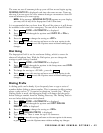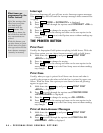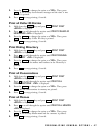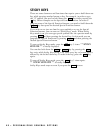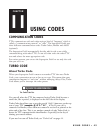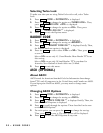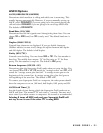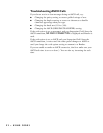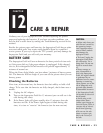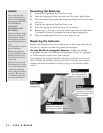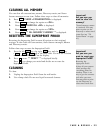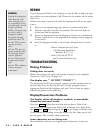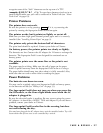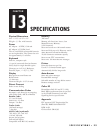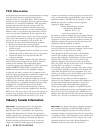
CARE & REPAIR
Ordinary care of your Superprint Pro80 includes replacing the printer
paper and replacing the batteries. If you have any other problems, you
may be able to solve them by reading the Troubleshooting section of this
manual.
Besides the printer paper and batteries, the Superprint Pro80 has no other
user-serviceable parts. Any repair work should be done by a qualified
service person. If you try to repair the TTY yourself, you may damage the
Superprint Pro80 and you will void your warranty.
BATTERY CARE
The Superprint Pro80 will run on batteries for short periods of time such
as if the power fails or if the power adapter is unplugged. Fully-charged,
the six, AA rechargeable NiCad batteries will provide approximately 15
minutes of normal use.
When the Power light blinks, you have about 5 minutes of battery power
left. The batteries will last longer if you turn off the printer when you use
battery power.
Checking the Batteries
Over time, with normal use, the batteries lose their ability to hold a full
charge. To be sure that the batteries are fully charged, check them once a
month.
1. Unplug the AC adapter.
2. Turn on the Superprint Pro80 for 15 minutes (you can still use it for
calls during this time).
3. If the Power light still glows steadily after 15 minutes, then the
batteries are fine. If the Power light begins to blink during this
time, it is time to “exercise” the batteries (see the next section).
CARE & REPAIR • 53
CAUTION:
✔ Adjust only those con-
trols that are covered by
the operating instruc-
tions. Improper adjust-
ment of other controls
may damage the
Superprint Pro80.
✔ To clean: Unplug the
Superprint Pro80 from
the wall outlet. Use a
damp cloth. Do not use
liquid or aerosol clean-
ers.
✔ Never attempt to
open, disassemble or
service the Superprint
Pro80. All repairs should
be performed by an
authorized service center.
Opening or removing
covers exposes you to the
risk of dangerous volt-
ages and other hazards.
If reassembled incorrect-
ly, the Superprint Pro80
can become an electrical
shock hazard.
✔ Avoid using a tele-
phone (other than a
cordless type) during an
electrical storm. There is
a remote risk of electric
shock from lightning.
✔ Do not use the tele-
phone to report a gas
leak in the vicinity of
the leak.
CHAPTER
12



